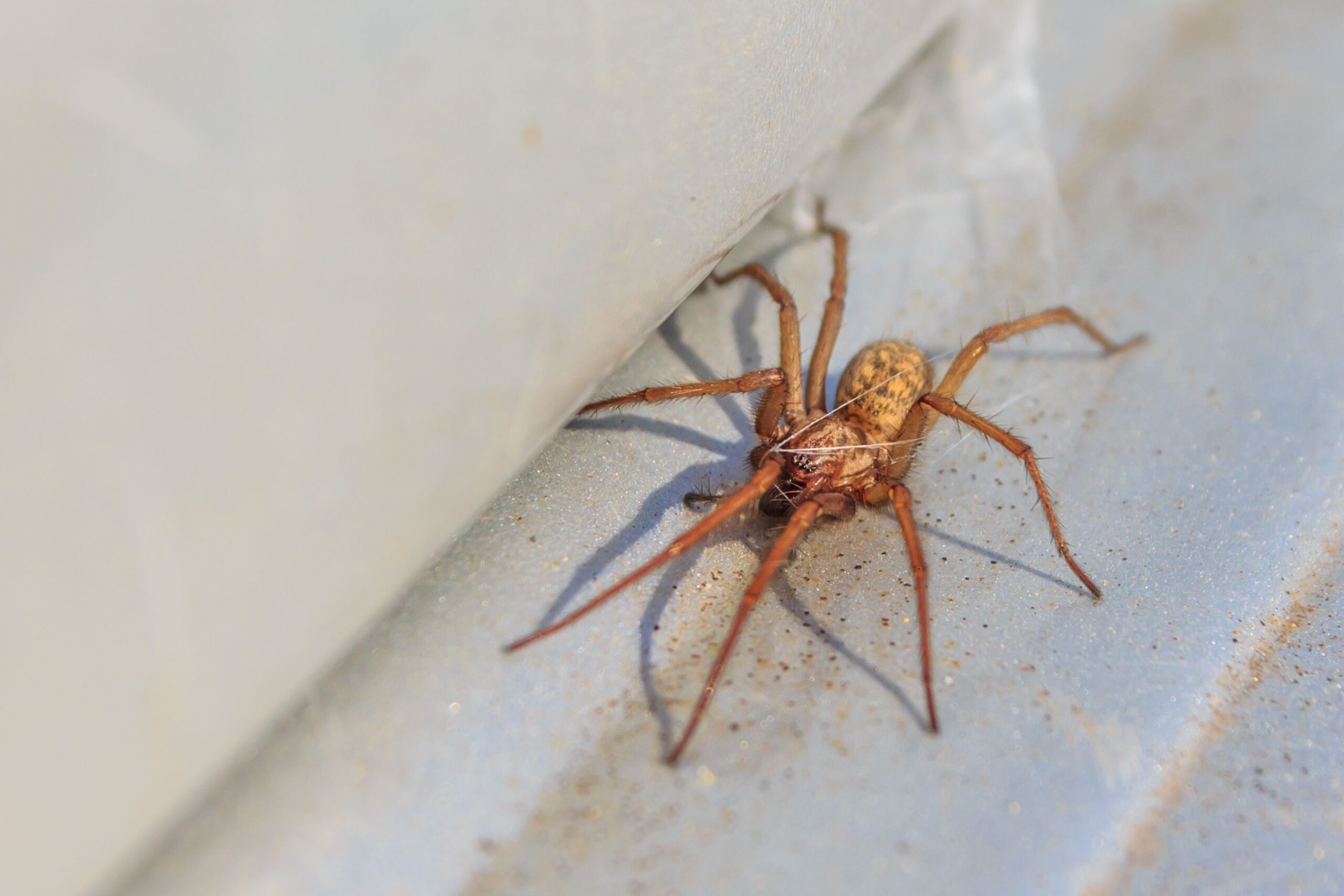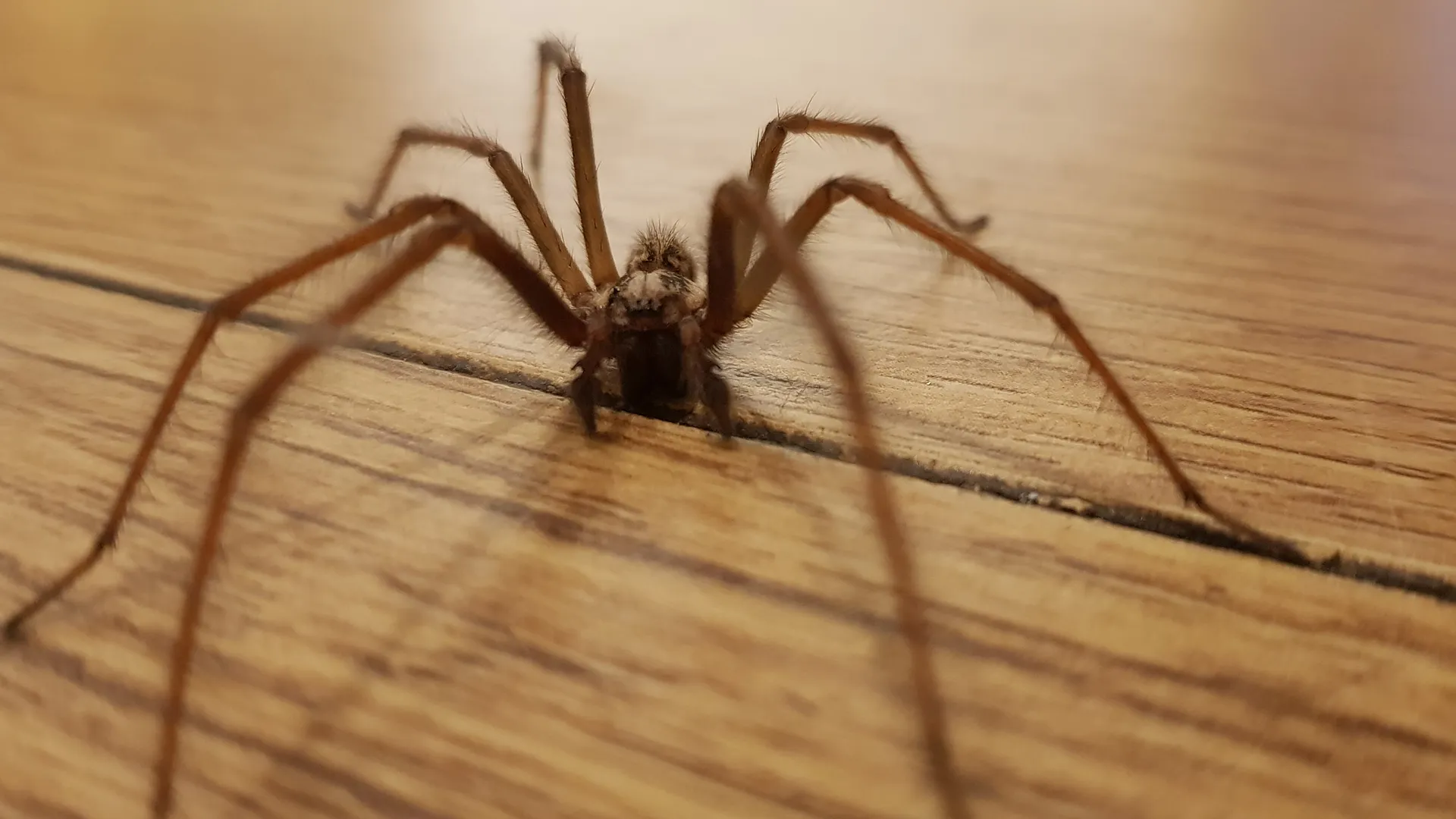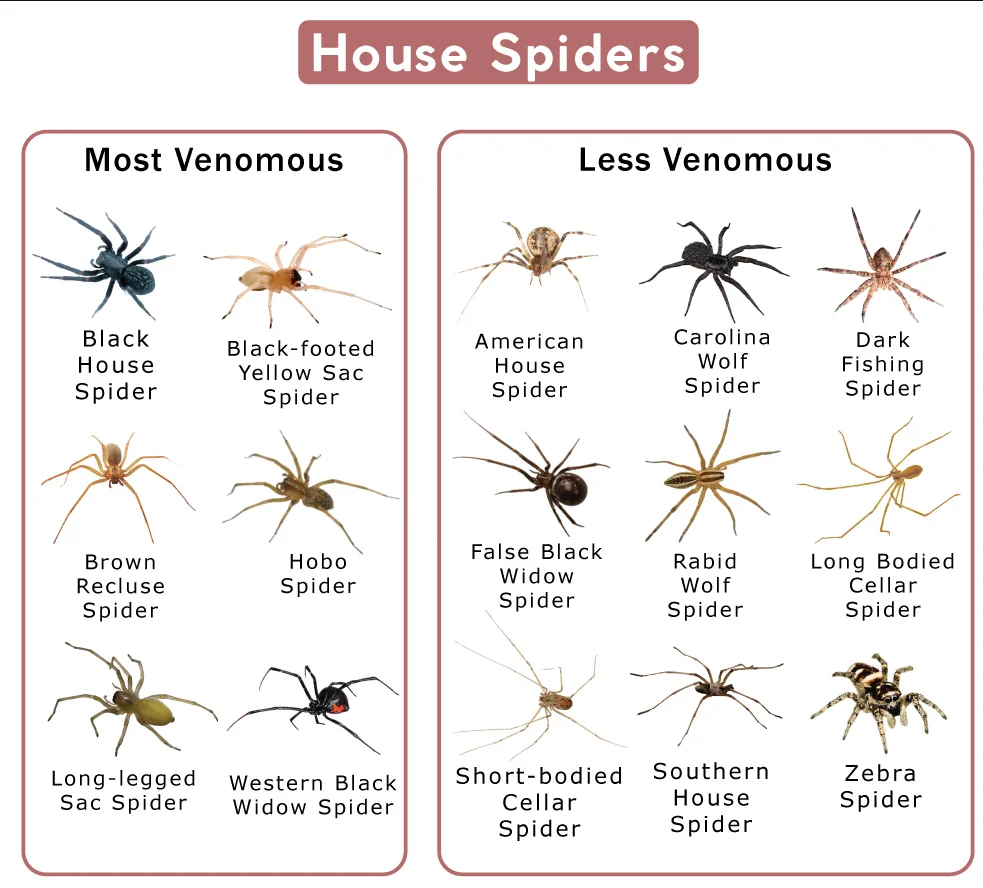Florida’s subtropical climate highlighted by mild winters, warm temperatures, and persistent humidity lets spiders stay active, hunt insects, and produce egg sacs with minimal seasonal slowdowns. In Pensacola, a notable Gulf Coast city in Florida’s Panhandle, these arachnids often spin webs in homes, short-term rentals, or commercial spaces if occupant or manager vigilance fades. This page clarifies why spiders flourish in Florida, how to detect an infestation, and why partnering with a professional spider exterminator is crucial for a web-free, worry-free living or working environment.
Whether you manage a home in Pensacola or rental properties extending to Cantonment or Molino, seeing spider webs early and deploying specialized, multi-step treatments stops occupant anxiety, potential bites, and repeated do-it-yourself solutions that usually ignore hidden egg sacs or the insect issues fueling spider populations indoors.
Why Spiders Thrive in Florida
Mild Winter Temperatures
In colder states, subfreezing winters drastically reduce spider activity or drive them dormant for months. Florida’s gentle cold season seldom approaches freezing, leaving spiders free to feed, breed, and weave webs year-round. Indoors, climate control (65–85°F) prevents seasonal dormancy, allowing spiders to stay active if occupant or manager vigilance is lacking.
High Humidity & Insect Prey
Spiders rely on bugs, flies, roaches, other pests for nourishment, and Florida’s humidity fosters abundant insect populations. In Pensacola, frequent lawn watering or periodic rain keeps conditions moist, drawing insects close to structures. Porch or indoor lighting luring nighttime bugs can further entice spiders to build webs in corners or overhead eaves.
Frequent People & Item Movement
Florida’s tourism, relocations, and secondhand trade shuffle furniture or décor frequently, possibly carrying spider egg sacs or unnoticed spiders to new spots. In multi-unit buildings or short-term rentals, occupant or staff oversight might let spiders spread from unit to unit if occupant checks or housekeeping is minimal.
Varied Spider Species
Florida hosts multiple spider kinds:
- House Spiders: Weave messy cobwebs indoors, typically in corner ceilings or behind furniture.
- Orb Weavers: Form large, circular webs outside near porch lights or gardens.
- Widow Spiders: Potentially venomous if threatened; inhabit darker, cluttered spots (garages, sheds).
- Wolf Spiders: Hunt on foot, sometimes roaming indoors at night in search of insect prey.
All can multiply if occupant or professional steps don’t reduce insect prey and remove egg sacs, especially in Florida’s mild winter that rarely stalls spider expansions.

Telltale Signs of a Spider Infestation
- Multiple Indoor Webs
- Seeing one or two webs is typical, but numerous webs around corners, ceilings, or windows often indicates a rising spider population.
- Orb weavers generally build outdoors; house or cobweb spiders form messy, smaller webs inside.
- Seeing one or two webs is typical, but numerous webs around corners, ceilings, or windows often indicates a rising spider population.
- Egg Sacs
- Round or disc-like sacs clinging to webs, furniture undersides, or dark corners.
- Each sac may contain dozens or more spiderlings unless occupant synergy or an exterminator removes them.
- Round or disc-like sacs clinging to webs, furniture undersides, or dark corners.
- Frequent Spider Sightings
- Seeing multiple spiders daily suggests enough insect prey is available.
- Wolf spiders or other hunter types may wander floors or walls at night, while widow spiders often hide in cluttered, dim places.
- Seeing multiple spiders daily suggests enough insect prey is available.
- Insect Carcasses in Webs
- Bits of flies, moths, or roaches wrapped in silk confirm spider feeding.
- Larger piles of insect shells suggest well-established spiders capable of producing egg sacs freely.
- Bits of flies, moths, or roaches wrapped in silk confirm spider feeding.
- Possible Bites & Occupant Fear
- Most Florida spiders are harmless, but occupant stress increases if venomous species (widow spiders) appear indoors.
- Actual bites remain infrequent but can occur if occupant contact with a hidden spider becomes more common.
- Most Florida spiders are harmless, but occupant stress increases if venomous species (widow spiders) appear indoors.
- Cluttered or Damp Storage
- Garages, sheds, or attics fill with webs and egg sacs if occupant cleaning lapses.
- Spiders anchor new sacs in low-traffic corners, feeding on insects nesting in clutter.
- Garages, sheds, or attics fill with webs and egg sacs if occupant cleaning lapses.
Why Overlooking Spiders Is Risky
Rising Spider Populations
Female spiders often produce multiple egg sacs containing numerous spiderlings each. Ignoring them allows spiderlings to hatch, weaving webs across new corners or rooms if occupant or manager detection is absent.
Occupant Distress & Potential Bites
Although bites remain rare, occupant apprehension intensifies if orb weavers, wolf spiders, or widow spiders appear indoors. Even harmless house spiders can create occupant dismay if webs and egg sacs spread visibly.
Unkempt Web Buildup
Excess webs on ceilings, in corners, or behind furniture tarnish property cleanliness. Rental owners or commercial managers risk occupant annoyance or negative impressions if webs accumulate where occupant housekeeping or professional solutions are lacking.
Underlying Insect Infestation
Spiders stay where insects thrive. Unless occupant synergy or professional treatments curb insect populations (like roaches or flies), spider webs reappear quickly even after occupant attempts remove them short-term.
More Intensive Remedies Later
When egg sacs hatch across multiple rooms, newly emerged spiderlings can saturate properties with webs, prompting occupant relocations or repeated insecticidal dusting, raising occupant disruption and overall expense.
Why a Professional Spider Exterminator Is Essential
Comprehensive Property Checks
A spider exterminator thoroughly inspects corners, furniture backs, overhead beams, attics, or sheds for webs, egg sacs, and leftover insect debris. Identifying spider species (house, orb weaver, widow, wolf) clarifies if overhead eave spraying, web vacuuming, or crack-and-crevice dusting is most suited.
Multi-Step Elimination
Professionals remove webs or egg sacs physically, then apply insecticidal dust or sprays where spiders rest. DIY occupant solutions like random aerosol usage usually kill a few visible spiders while ignoring egg sacs or underlying insect infestations fueling spider expansions.
Safe & Targeted Chemicals
Unskilled occupant pesticide use can saturate living areas, risking occupant or pet safety. Exterminators employ insecticidal dust or residual sprays precisely in cracks, corners, or overhead beams prime spider habitats while occupant synergy ensures webs and egg sacs are physically removed. Limiting occupant or pet chemical exposure remains a focus.
Insect Prey Reduction
Because spiders feed on insects, occupant synergy addressing roaches, flies, or ants deprives spiders of abundant prey. Ensuring sealed garbage bins, using yellow “bug lights” outside, or effectively managing roach populations starves spider hunts, discouraging them from settling indoors.
Follow-Up & Reassurance
Spider egg sacs can hatch weeks after occupant web removal. Many exterminators re-check occupant concerns or call if new webs appear, applying occupant housekeeping or insecticidal dust so newly hatched spiderlings also face lethal conditions.

Typical Methods for Spider Treatments
- Inspection & Species Identification
- Professionals examine ceiling corners, furniture backs, attic beams, or décor edges for webs, egg sacs, or leftover insect shells.
- Confirming spider type house, orb weaver, widow, wolf determines overhead dusting, web removal, or targeted insecticidal sprays.
- Professionals examine ceiling corners, furniture backs, attic beams, or décor edges for webs, egg sacs, or leftover insect shells.
- Web & Egg Sac Removal
- Physically tearing down webs undermines spider feeding prospects.
- Proper disposal of egg sacs (sealing in plastic) stops spiderlings from hatching in occupant trash bins.
- Physically tearing down webs undermines spider feeding prospects.
- Insecticidal Dust & Residual Sprays
- Sprays or dust near baseboards, overhead beams, or cracks kill spiders returning after occupant synergy cleans webs.
- Occupant or pet exposure stays minimized while ensuring spiders or newly hatched spiderlings face lethal barriers.
- Sprays or dust near baseboards, overhead beams, or cracks kill spiders returning after occupant synergy cleans webs.
- Insect Control
- Spiders rely on abundant insects like roaches or flies. Occupant synergy or professional insect solutions hamper spider expansions.
- Insect Growth Regulators hamper insect reproduction, indirectly shrinking spider food sources.
- Spiders rely on abundant insects like roaches or flies. Occupant synergy or professional insect solutions hamper spider expansions.
- Vacuuming & Steam Indoors
- Frequent vacuuming clears stray spiders, egg sacs, or leftover insect remains feeding spiders.
- Steam kills spiders or eggs in upholstery folds without chemicals.
- Frequent vacuuming clears stray spiders, egg sacs, or leftover insect remains feeding spiders.
- Exclusion & Outdoor Adjustments
- Sealing foundation cracks, installing door sweeps, or patching torn screens blocks insect infiltration that spiders follow.
- Using yellow porch bulbs lowers insect draws near doors, limiting spider hunts.
- Sealing foundation cracks, installing door sweeps, or patching torn screens blocks insect infiltration that spiders follow.
- Monitoring & Re-Checks
- Eggs may hatch weeks after occupant web removal. Additional occupant synergy or insecticidal dust ensures leftover sacs don’t produce spiderlings re-spreading webs.
- Re-check occupant sightings finalize occupant security from new spider expansions.
- Eggs may hatch weeks after occupant web removal. Additional occupant synergy or insecticidal dust ensures leftover sacs don’t produce spiderlings re-spreading webs.
- Inspection & Species Identification

Service Area: Pensacola, Cantonment, Molino
Although spiders adapt statewide under Florida’s year-round mild conditions, this page tackles spider issues in Pensacola, plus Cantonment and Molino, where occupant synergy plus specialized spider treatments remain vital for thorough elimination or prevention. Florida’s gentle cold season rarely deters spider feeding or egg-laying, so occupant synergy plus professional extermination best remove or contain spider populations, especially if abundant insects linger indoors.
Why Choose Us
Florida-Focused Approach
We combine recognized spider management web/egg sac removal, insecticidal dust or sprays, limiting insect prey suited to Florida’s climate. Occupant synergy (like vacuuming corners or replacing bright porch bulbs with “bug lights”) plus complete exterminator coverage surpass occupant tries reliant on random aerosol sprays that skip hidden egg sacs or deeper insect fueling webs.
Thorough Examinations
Before applying chemicals or removing webs, technicians search corners, overhead beams, furniture backs, or attic rafters for spider egg sacs, leftover insect bodies, or adult spiders. Establishing if spiders reside only in certain corners or multiple floors directs occupant synergy plus professional coverage to each spider stage.
Precise, Safe Chemical Usage
Experts place residual sprays or dust specifically where spiders rest baseboards, cracks, overhead beams rather than flooding occupant floors. Vacuuming or manually destroying webs greatly reduces spider populations. Occupant synergy controlling roaches or flies ensures fewer insect draws for spiders.
Re-Check & Occupant Education
Spider egg sacs may hatch weeks after the occupant sees fewer webs. Occupant re-check or second visits confirm newly emerged spiderlings also face lethal exposure. Occupants might adopt frequent vacuuming, store trash properly, or reduce yard insects starving spiders of prey near entries.
Quick, Local Service
Covering Pensacola, plus Cantonment and Molino, we understand occupant patterns, short-term rentals, and Florida’s mild winter fueling spider expansions. Our proven solutions plus flexible scheduling minimize occupant disruptions, ensuring spiders vanish across each life stage thoroughly.
Next Steps
Observing abundant webs on ceiling corners, spotting egg sacs behind furniture, or concerned about venomous widow species hidden in clutter? Contact us to learn more or schedule your service. Our spider treatments in Pensacola and adjacent Cantonment, Molino blend property-wide inspections, web and egg sac elimination, carefully targeted insecticides, occupant synergy in reducing insect prey, plus re-check visits erasing existing spiders and thwarting new infestations.
Act quickly to spare occupants or pets from possible bites, occupant anxiety, or unsightly webs in corners. Rely on our Florida-oriented spider exterminator expertise to handle each spider species effectively, guaranteeing a web-free interior despite Florida’s mild winter that otherwise encourages insect and thus spider populations to remain active all year.
